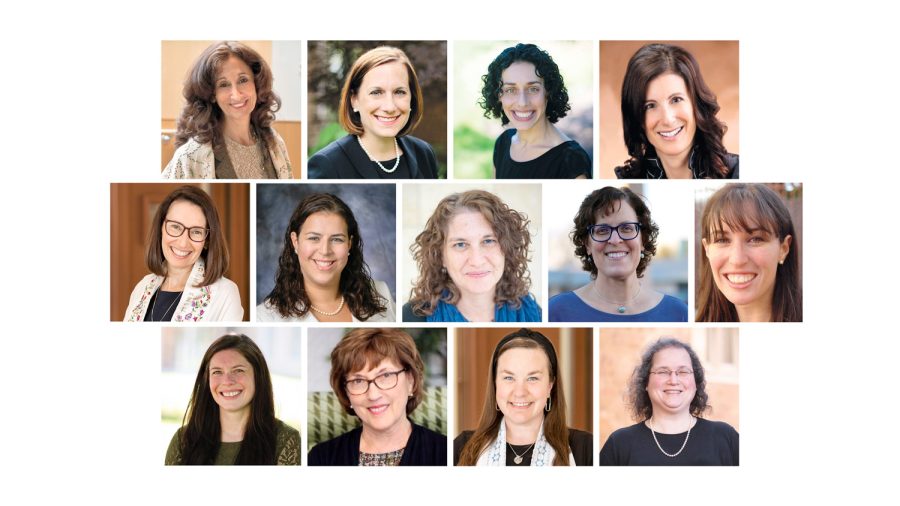50 years after first woman ordained, St. Louis is rich with female rabbis
Some of the women rabbis in the St. Louis area include (top row, from left) Rabbi Susan Talve, Rabbi Brigitte Rosenberg, Rabbi Amy Feder and Rabbi Elizabeth Hersh; (second row) Rabbi Andrea Goldstein, Rabbi Lori Levine, Rabbi Tracy Nathan, Rabbi Janine Schloss and Rabbi Jessica Shafrin; (third row) Rabbi Karen Bogard, Rabbi Dale Schreiber, Rabbi Rachel Bearman and Rabbi Pamela Barmash.
Published October 21, 2022
Something radical happened 50 years ago. Judaism experienced a crack in the patriarchy when the first woman was publicly ordained as a rabbi. There had been private ordinations before, ordinations that weren’t recognized outside a small circle of people. But in 1972, Sally Priesand received the title of rabbi at Hebrew Union College in Cincinnati and paved the way for Jewish women to have access to a life denied them for generations.
It took an additional 13 years before the Conservative movement allowed women to become rabbis.
The Orthodox movement is still debating the issue, although Yeshivat Maharat in New York has been matriculating women to serve as spiritual leaders since 2009, including Maharat Rori Picker Neiss, executive director at the Jewish Community Relations Council.
ADVERTISEMENT

“I was in the right place at the right time,” Picker Neiss, 37, said. “We weren’t anything more than anybody else other than we were there when they were able to do it, and so we got to be part of it. There were women for decades, hundreds of years, many women who came before who had far more studying and work invested in the community who chose a different path because they saw no path forward in Jewish communal leadership.”
St. Louis is rich with female rabbis, each of whom represents either the beginning of an era or an established practice. All of them recognize the significance of what began 50 years ago. Their combined experiences reflect how Judaism has the capacity to learn from women in the rabbinate and embrace what women offer, even if it’s been a bumpy ride along the way.
When Rabbi Susan Talve was growing up in New York, the idea of her becoming a rabbi wasn’t even an option. But world and personal events prompted her to want to delve deeper into understanding her relationship with Israel and Judaism. When one of the rabbis from her family’s congregation encouraged her to apply to Hebrew Union College, Talve said she did so on a lark.
“I had no model,” she recalled. “There were no women. I was a sophomore in college when Sally (Priesand) was ordained. She was a token, and I was not going to be a token in a patriarchal profession. I knew enough about feminism not to do that. And look what happens. God laughed.”
ADVERTISEMENT
As St. Louis’ first female pulpit rabbi (the first female rabbi in St. Louis worked at Hillel just a few years before Talve arrived), Talve, 69, has become aware of the importance of representation.
Creating a space for female rabbis locally
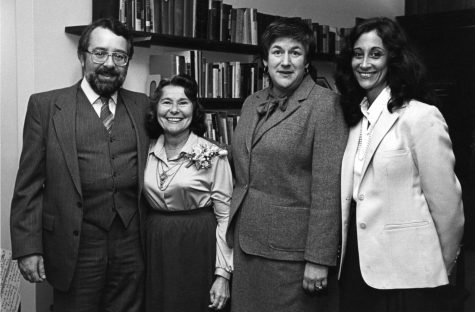
Talve had her first child, Jacob, when she was an assistant rabbi at Congregation Shaare Emeth in the early 1980s. The idea of maternity leave was nonexistent, so by the time her second child came along, Talve was at a loss and decided to leave her job.
“I didn’t think I could work anymore,” Talve said. “I didn’t think it was possible to be a nursing mother, give attention to my children and be a congregational rabbi.”
It took the formation of Central Reform Congregation to bring Talve back to the pulpit. She credits the synagogue’s founders with intentionally creating a job that allowed her to be her whole self.
“This new group were feminists like me, and they wanted it to work,” Talve said. “They wanted to create a space where women’s values were front and center. That I didn’t have to spend myself completely. We tried to create that base and be a model for other working parents.”
As a result, a generation grew up seeing someone in a high- profile job who proved that women could be leaders and wives and mothers. But having women serve as rabbis has done more than create role models for young women. It’s also changed Judaism.
The ‘feminization’ of rabbis
“It doesn’t make sense for clergy to represent only 50% of the community,” said Rabbi Janine Shloss, 55, rabbi educator at Temple Emanuel. “Each of us brings to our role the experience we have personally and the experience we have with our family. To have that only be reflected through the male experience is not inclusive of a broader experience.
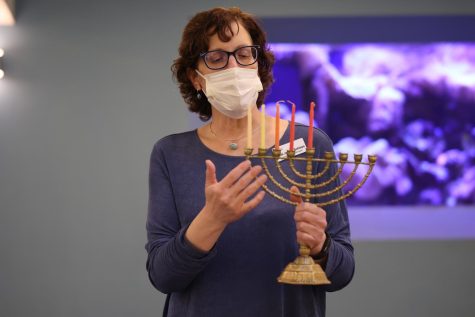
“It’s not that men and women do things differently, but there is a different sensitivity and different set of lenses through which we look at the world.”
Women’s influence in Conservative and Reform Judaism is evident in a variety of ways. The language in prayers is more gender inclusive; baby girls now have naming ceremonies that correlate to baby boys’ brit milah; and there are rituals that recognize every stage of a woman’s life cycle.
The greatest impact, however, is probably the ability of women to use a Jewish lens to humanize life’s experiences. For Rabbi Tracy Nathan, a member of the faculty at the Saul Mirowitz Community School, that fact hit home for her when she gave a sermon to her congregation in San Francisco, where she was an assistant rabbi.
“I had a miscarriage, and I talked about it in the context of the Rosh Hashanah haftorah: Chanah had been barren for many years before giving birth to the prophet Samuel,” Nathan said. “After the sermon, a flood of people talked with me about it, about their pregnancy losses. They were so grateful to be able to open up about it.”
When Nathan eventually did give birth, she delivered another sermon about the concerns and hopes of anticipation of expecting a baby.
“After the sermon, the senior rabbi (who was male) said to me, ‘I couldn’t have given that sermon,’ ” Nathan said.
Being held to a different standard
Despite the empowerment of being able to touch people, nearly every female rabbi has felt the sting of being held to a different standard than her male peers. Several talked about how congregants address men as “rabbi” but call women by their first names. Others recall having congregants suggest that wearing pants detracts from a woman’s authority.
For the younger women interviewed, these experiences happen much less frequently than it did to the “first generation” of female rabbis, including Picker Neiss. For her, half of the Orthodox community doesn’t accept her status to begin with. As a result, she finds herself navigating the community as a symbol, rather than an individual.
“It was an interesting experience to be simultaneously loved and hated before I even did anything,” she said. “In some ways, it makes me equally uncomfortable to just be loved. I am keenly aware of the fact that I often exist in people’s minds completely differently than I am as an actual human. What I represent to people and what I stand for, for people, is not actually related. And that’s been a hard process. What people are fighting about is not actually me, but some idea that’s in their head that I have come to represent for them.”
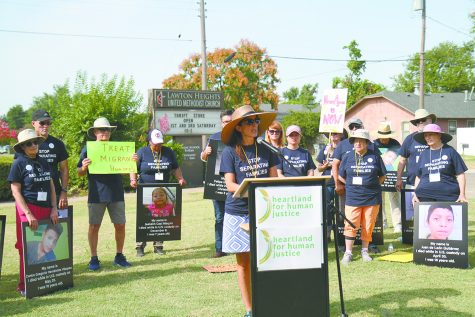
Reform and Conservative female rabbis no longer have to negotiate having their smichas (rabbinic ordination) challenged. Rabbi Elizabeth Hersh, 56, senior rabbi at Temple Emanuel, said the relative speed with which women were accepted as rabbis aligns with what she loves about Judaism.
“The Reform movement has opened the gates for respect for all humanity,” Hersh said. “The Jewish world has never stayed the same. If you look to Judaism in the time of the second temple and compare it to the Hasidic movement and then to now, no one would recognize Judaism. So the Reform movement has walked with us and encouraged us to change with the times, which is quintessential Judaism. Judaism is never stagnant.”
As Hersh looks to the next 50 years, she expressed a hope for what all the rabbis interviewed for this story said: Drop the modifier before the word rabbi.
That would also be a relief for Rabbi Amy Feder, 43, senior rabbi at Temple Israel. She said she’s tired of having to explain some things to her congregants.
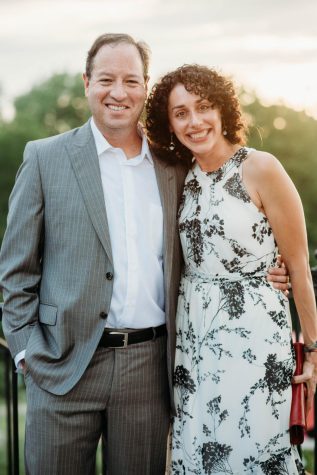
“How many times have I had to say when I sign a ketubah that, traditionally, this would be signed by two Jewish men who aren’t related to you, she said. “But it’s OK that you have a woman rabbi signing it.
“It would be great to define ourselves as rabbis and not as lady rabbis. And especially here in St. Louis. There are a lot of us here. I really do think in this town it’s pretty amazing that there are a lot of female rabbis and that should be something that we celebrate.”



